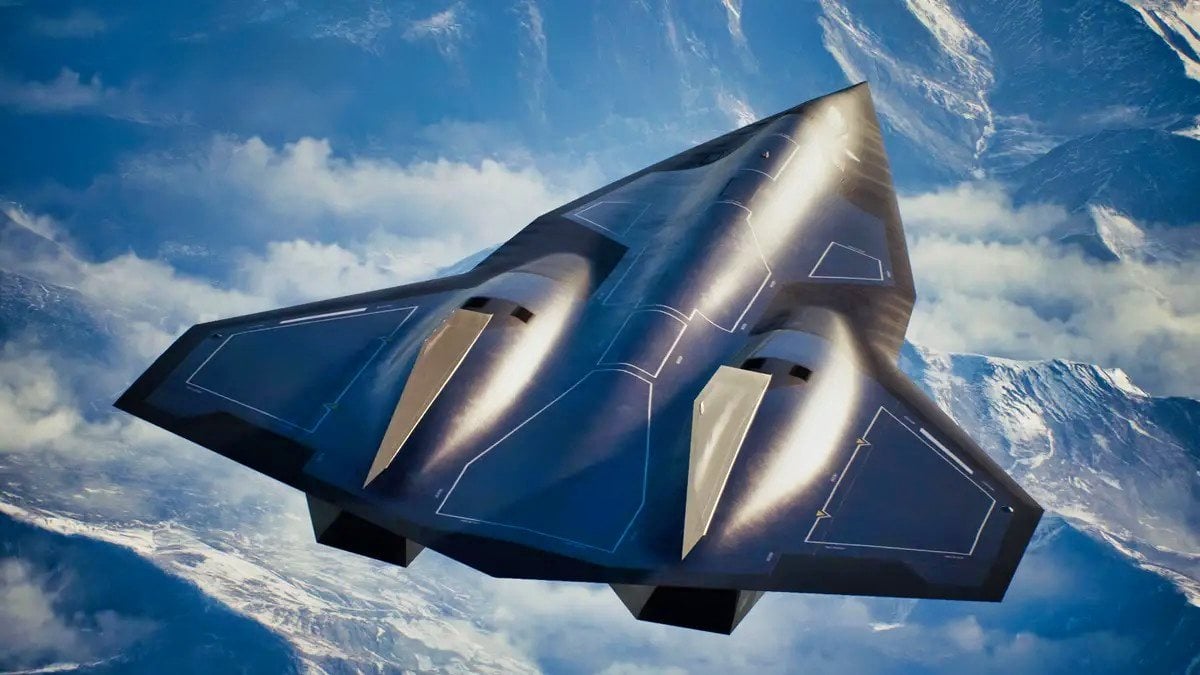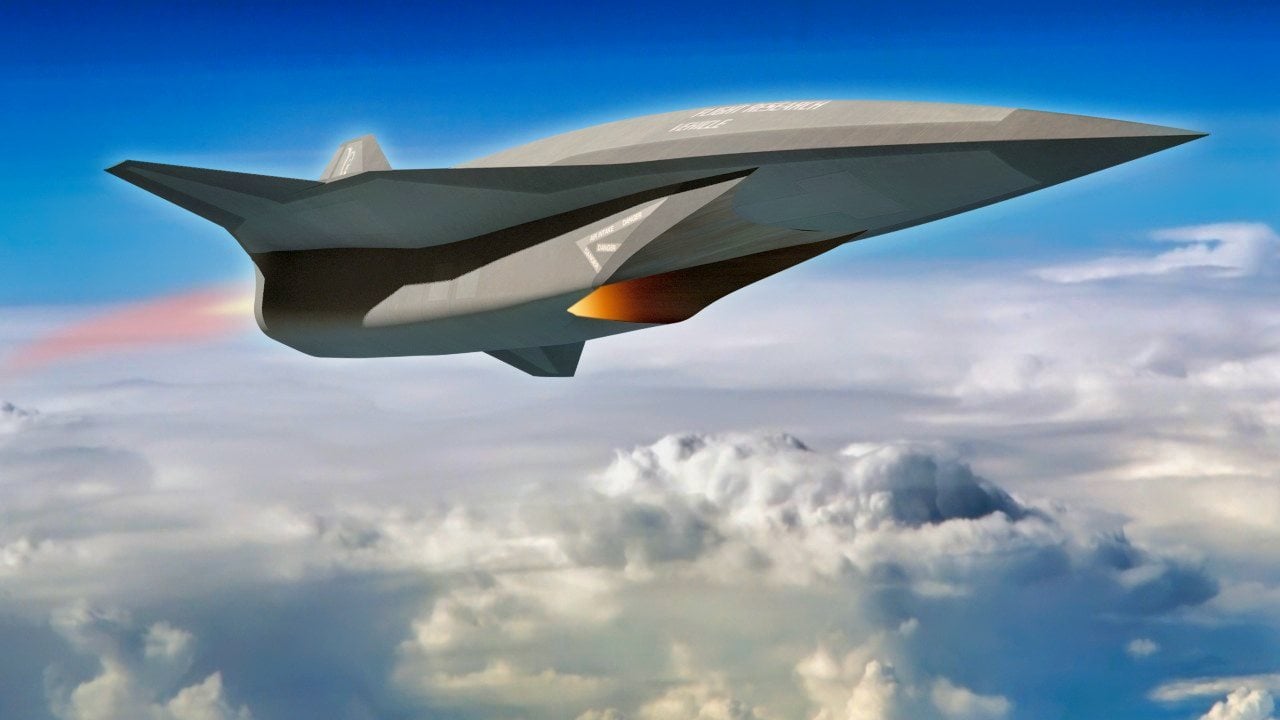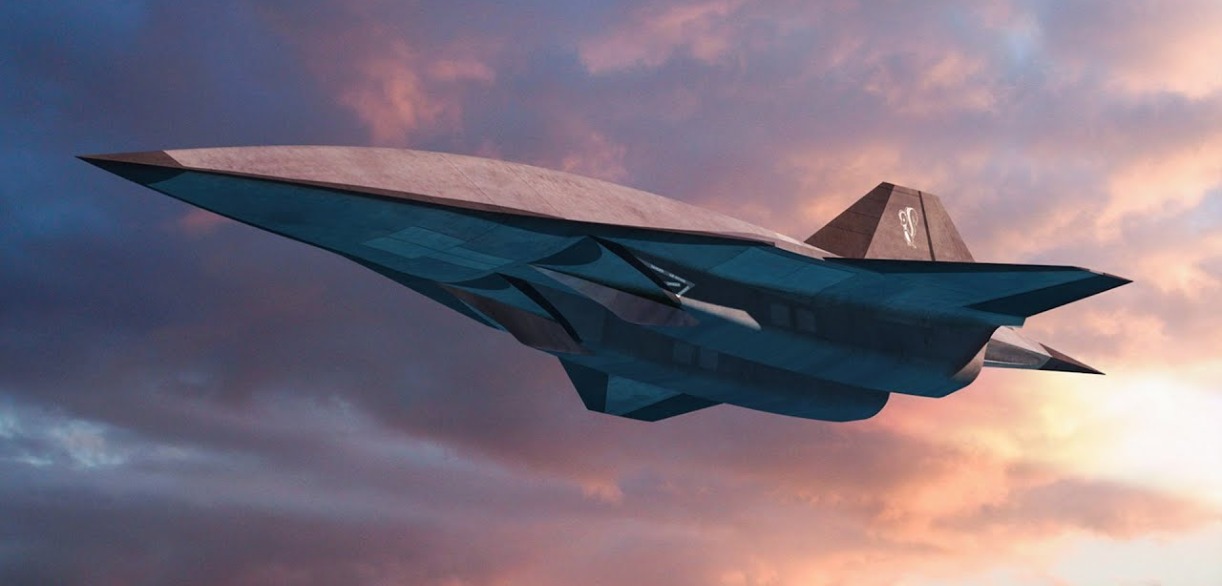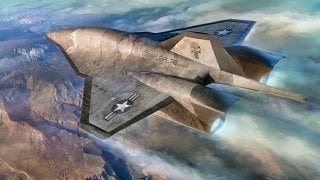Mach 6 SR-72 Son of Blackbird Could Soon Become Very Real
The SR-72 was once publicly touted as a Mach 6+ spy plane with strike capabilities, meaning this high-flying jet wouldn’t be limited to solely taking pictures like its Blackbird predecessor and would instead be capable of engaging targets directly on extremely short timelines and with minimal chance of intercept.
Summary and What You Need to Know: Lockheed Martin’s SR-72 hypersonic aircraft, a successor to the SR-71 Blackbird, is advancing toward service but faces significant budgetary challenges. Recent reports reveal the program has exceeded its budget by $45 million in Q2 2024, bringing total losses to $335 million since 2022. This overspending highlights ongoing financial strain, compounded by Lockheed’s self-funded development approach.
-Despite these issues, the SR-72’s potential—promised as a Mach 6+ aircraft with ISR and strike capabilities—remains high.
-The program's secrecy and Lockheed's expansion efforts suggest it is progressing toward operational status, potentially aligning with future U.S. Air Force needs.
Secretive SR-72 Hypersonic Aircraft Hits Financial Hurdles, Yet Shows Promise
Lockheed Martin’s mysterious hypersonic aircraft known as SR-72 appears to be continuing its march toward service, but the program is not immune from the Air Force’s broader budgetary woes.
Sandboxx News has covered the secretive development of SR-72, Lockheed Martin’s hypersonic successor to the legendary SR-71 Blackbird, and its potential path toward service in the not-too-distant future. Now, new evidence has come to light that suggests this exotic new aircraft program is facing compounding budgetary shortfalls, which could further complicate matters for the Air Force as it struggles to find ways to fund a bevy of high-profile new efforts, including new ICBMs, stealth bombers, and air superiority fighters.
The SR-72 was once publicly touted as a Mach 6+ spy plane with strike capabilities, meaning this high-flying jet wouldn’t be limited to solely taking pictures like its Blackbird predecessor and would instead be capable of engaging targets directly on extremely short timelines and with minimal chance of intercept.
Lockheed’s secret program went another $45 million over budget
According to recent Aviation Week reports, a classified Lockheed Martin program that involves a “highly complex design and systems integration” went another $45 million over budget in the second quarter of 2024. Based on Lockheed’s quarterly filing with the U.S. Securities and Exchange Commission, that places the firms’ total losses associated with this single shadowy program up to some $335 million since 2022. Those same filings went on to postulate that losses may continue to accrue as the company faces “advanced procurement costs” moving forward.
This all points toward what Aviation Week’s defense and space editor, Steve Trimble, describes as “pre-contract investments” made by Lockheed. It also suggests that the company is continuing to self-fund development based on the idea that the Pentagon will not only see the platform’s value, but will be willing to pay enough for a production fleet that will allow Lockheed to recoup its development losses.
This may seem like a rather unusual approach to developing such a high-dollar aircraft, but historically, it’s not really out of the ordinary for Lockheed Martin’s legendary Skunk Works.
In books by both Skunk Works founder Kelly Johnson and his direct successor, Ben Rich, there are accounts of several Skunk Works programs, like the D-21 supersonic ISR drone, that began as a bright idea Lockheed’s engineers knew the U.S. military or intelligence apparatus could very likely use, and which were then developed and pitched to decision-makers at the Pentagon.
More frequently, however, developmental efforts were spurred by hushed conversations between men like Kelly Johnson and senior Defense officials who relayed the nation’s most pressing needs hoping the Skunk Works hivemind might have a potential solution.
Famously, Johnson designed and delivered America’s first-ever jet-powered fighter in this manner, with formal design work on the XP-80 commencing a full four months before the firm was awarded a contract for the jet.

But in this modern era of bureaucratic oversight and extended design cycles, it seems unlikely that Lockheed Martin would have gone all-in on fielding the SR-72 without some pretty conclusive evidence from the Air Force that it’d eventually step in and foot the bill. The firm’s financial records seem to substantiate that likelihood.
“We will monitor the recoverability of pre-contract costs, which could be impacted by the customer’s decision regarding future phases of the program,” Lockheed said of this program in its filings.
While the SR-72 effort appears to have continued to progress under the classified veil since early 2018, word of these losses, combined with the rapid expansion of Lockheed Martin’s Skunk Works facilities and personnel, all point toward the production of a new classified aircraft meant not for testing, but likely, operational service.
What is the SR-72?
Lockheed Martin began development on a hypersonic successor to the Blackbird in 2006. The program continued in secret for seven years, before being formally announced to the public in 2013 with a media push that included several interviews with Lockheed Martin’s hypersonics program manager and the engineer who led the effort for the previous seven years, Brad Leland.
“Hypersonic aircraft, coupled with hypersonic missiles, could penetrate denied airspace and strike at nearly any location across a continent in less than an hour,” Leland was quoted as saying in a Lockheed Martin press release that has since been taken down. “Speed is the next aviation advancement to counter emerging threats in the next several decades. The technology would be a game-changer in theater, similar to how stealth is changing the battlespace today.”

This new high-speed aircraft would make use of a never-before-fielded type of engine that was, for all intents and purposes, two (or maybe even three) types of jet engines in one.
As Leland described it, this new propulsion system started with a conventional turbofan engine – either the Pratt & Whitney F100 or the General Electric F110 – as its basis. This turbofan would allow the aircraft to take off from a stop and accelerate to supersonic speeds like any normal fighter, but once the jet began to approach Mach 3, the engine’s second half would roar to life.
That second half is said to be a dual-mode ramjet (sometimes called a dual-mode scramjet or supersonic combustion ramjet) that relies on the immense pressure of inflowing air at supersonic speeds and a variable inlet design to create intentionally placed shockwaves for compression.
As a result, this engine design could propel an aircraft well past the SR-71’s record-setting top speed of Mach 3.2, past the notional hypersonic barrier at Mach 5, and potentially even past Top Gun’s fictional Darkstar (which was notably built in partnership with Skunk Works) at Mach 10.
This type of engine design, which has since become more commonplace, is known as a turbine-based combined cycle, or TBCC, engine. While Lockheed Martin was leading the design effort on the aircraft, Aerojet Rocketdyne was tasked with engine development.
Originally billed as a Mach 6+ aircraft, this new platform was slated from the start as an intelligence, surveillance, and reconnaissance (ISR) asset with strike capabilities. This meant the aircraft would be capable of carrying a variety of payloads, including munitions to engage ground targets.
While Leland highlighted the use of this new aircraft as a hypersonic missile launch platform, it now seems more likely that we’d see this hypersonic aircraft deploy lower-cost munitions designed specifically to be dropped or launched at hypersonic speeds. The hypersonic missiles the United States has in development come in a variety of forms, but all are considered to be immensely expensive compared to more traditional ordnance.
Due to the immense pressure and heat inherent to high-speed flight, there are significant – but not insurmountable – engineering challenges to overcome in order to drop or launch a weapon at these extreme speeds. Lockheed proved the viability of launching air-to-air missiles successfully at speeds over Mach 3 with the YF-12 (a weaponized sibling of the SR-71), and more recently, Sandboxx News confirmed this possibility of deploying weapons at much higher speeds with Dr. Chris Combs, a Dee Howard endowed professor of hypersonic and aerospace engineering for the University of Texas San Antonio, who has also done a great deal of work with the Defense Department in the past.

But the SR-72’s alleged strike capabilities aren’t the only important matter. The aircraft’s ability to provide rapid intelligence over any target on earth would be vital for the United States in a 21st-century conflict, especially over the sprawling expanses of the Pacific. Despite public perceptions of satellites providing constant global overwatch, the truth is, there aren’t enough satellites in orbit to have eyes everywhere needed, and the predictability of satellites’ orbits makes them fairly easy to keep secrets from.
This has driven the funding of a long list of modern intelligence-gathering aircraft, ranging from the original mascot of the Global War on Terror, the MQ-1 Predator, to highly exotic airframes we still don’t know the real names of, like the Northrop Grumman-sourced RQ-180.
Yet, despite America’s immense investment into spy planes in recent decades, all of these platforms (that we’re aware of) fly at subsonic speeds, making timely intelligence gathering a question of locality and airframe availability. The MQ-9, for instance, may be able to stay airborne for more than 24 hours at a time, but with a standard cruising speed of just 230 miles per hour, it would take a Reaper more than an hour to fly from New York to Boston and more than 10 hours to fly cross-country.


